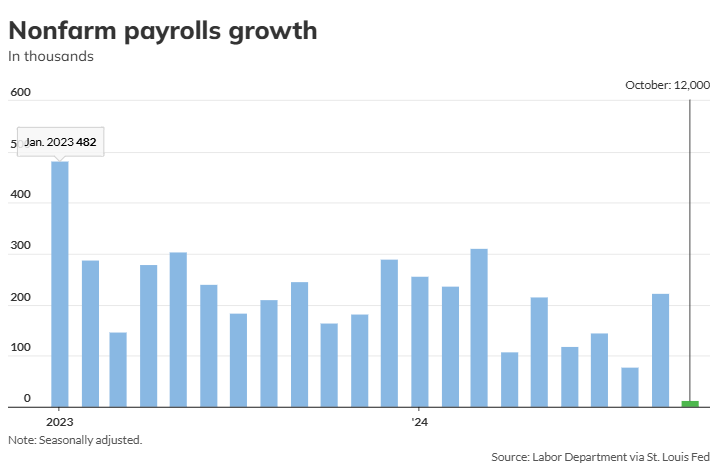A strike at Boeing and a pair of major hurricanes curbed employment gains in October as the U.S. added a paltry 12,000 new jobs, temporarily muddying the view of how much the labor market is cooling.
The increase in employment was the smallest since December 2020.
The Federal Reserve is expected to look past the October employment report and cut interest rates again next week when it meets after the presidential election.
The unemployment rate, meanwhile, was unchanged at 4.1%.
Ongoing labor strife at Boeing and a few other strikes may have lopped off an estimated 40,000 jobs from the October report, economists say. Hurricanes Helene and Milton may have reduced employment by an additional 50,000 or more, estimates suggest.
The number of people being hired each month has fallen since last spring as companies seek to contain costs and wait for the economy to accelerate.
The economy is adding enough new jobs, however, to keep the unemployment rate low and to extend a four-year-old expansion that shows little sign of ending. Secure in their jobs, Americans are spending more than enough money to drive the economy forward.
The Fed, for its part, has shifted its focus to maintaining a strong labor market now that the rate of inflation has returned close to low pre-pandemic levels. The jobless rate has risen from a cycle low of 3.4%.
Economists polled by The Wall Street Journal had forecast a 110,000 increase in new jobs in October. The number is seasonally adjusted.















